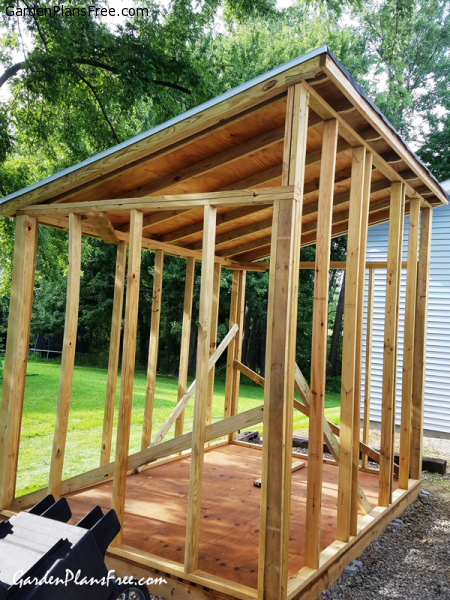
Building Your Own Lean-To Shed: A DIY Guide
Dreaming of extra storage space without breaking the bank? A lean-to shed is the perfect solution! This simple structure, attached to an existing wall, offers practical storage without the complexity of a freestanding building. This guide provides a step-by-step approach, empowering you to build your lean-to shed with confidence, even if you're a DIY novice. Get ready to transform that unused space into a functional and valuable asset!
Planning and Preparation: Laying the Foundation for Success
Before you grab your tools, meticulous planning prevents costly mistakes later. Begin by deciding on the dimensions of your shed. Consider the available space against your existing wall, the amount of storage you need, and the materials you plan to use. Next, secure the necessary permits â€" building codes vary by location, so contacting your local authorities is crucial. Don’t skip this step; it could save you considerable trouble down the road. Finally, compile your materials list (detailed below). Accurate measurements are vital; double-check everything before purchasing to avoid unnecessary trips to the hardware store. Accurate planning sets the stage for a smooth and efficient building process.
Essential Materials
Gather these materials before starting your project. Remember to adjust quantities based on your shed's dimensions:
- Pressure-treated lumber for the frame (4x4 posts, 2x4s for framing)
- Plywood or OSB sheeting for the walls and roof
- Roofing material (e.g., asphalt shingles, metal roofing)
- Concrete or pressure-treated lumber for the base (depending on your chosen foundation)
- Nails, screws, and other fasteners
- Building wrap (to protect against weather)
- Level, measuring tape, saw (circular saw recommended), drill, and other basic tools
Building the Foundation: A Stable Start
A sturdy foundation is paramount. You have two main choices: a concrete slab or a pressure-treated lumber base. For a concrete base, dig a trench and pour a level slab. Ensure it's appropriately sized for your shed's footprint. Alternatively, construct a base using pressure-treated 4x4s, creating a frame and securing it to your existing wall. This method is quicker but may require more frequent maintenance. Regardless of your choice, levelness is crucial. Use a level to ensure the base is perfectly horizontal; this prevents future structural issues. A level foundation supports the weight of your shed evenly and keeps everything aligned.
Framing the Structure: Constructing the Skeleton
With your foundation set, build the frame. Begin by attaching vertical 4x4 posts to your existing wall using sturdy brackets and appropriate fasteners. Then, construct the top and bottom plates using 2x4s, creating a rectangular frame. Ensure everything is square and plumb. Use a level and speed square consistently. Bracing the frame with additional 2x4s adds significant structural integrity. Carefully measure and cut all lumber; precision here prevents future problems. A well-built frame forms the backbone of your lean-to, ensuring stability and longevity.
Sheathing and Roofing: Weather Protection and Finishing Touches
Attach the plywood or OSB sheathing to the frame, creating solid walls. Use construction adhesive and nails for a secure bond. Ensure the sheathing is flush and weather-resistant building wrap over the sheathing to act as a moisture barrier. Finally, install your chosen roofing material, following the manufacturer's instructions. Consider adding extra support beams for heavy roofing materials. Proper installation protects your shed from the elements and increases its lifespan. Remember to carefully seal all gaps and joints to prevent water infiltration.
Finishing Touches and Enjoyment!
Once the roof is complete, you can add finishing touches like a door and a simple window for ventilation. Apply paint or stain to protect the wood. Consider adding some shelving for enhanced storage. Your new lean-to shed is now ready for use! Enjoy the satisfaction of a job well done and the increased storage space you’ve created. Remember regular maintenance will extend its lifespan. You have successfully transformed a simple idea into a practical and valuable addition to your property. Congratulations!

No comments:
Post a Comment
Note: Only a member of this blog may post a comment.